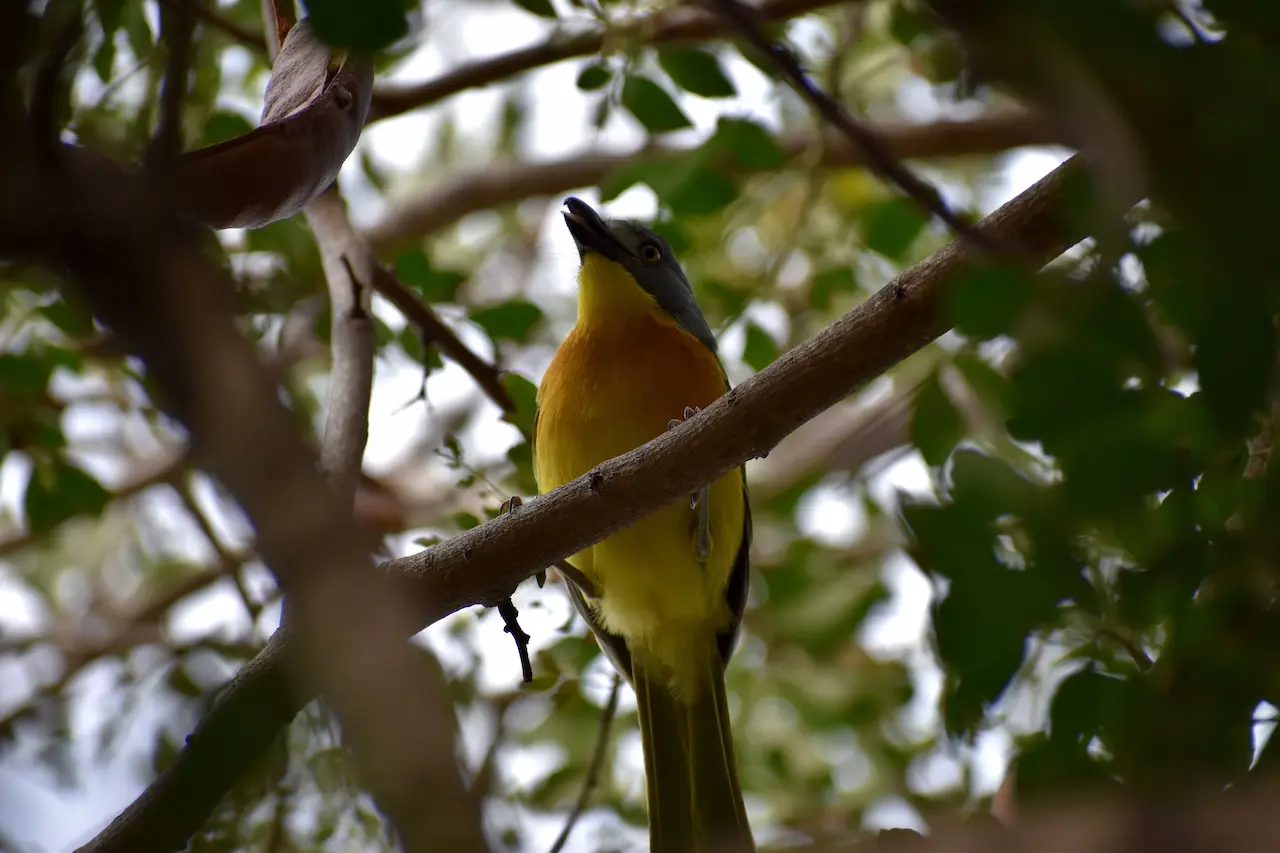Bearded Barbets
The Bearded Barbets (Lybius dubius) is an African barbet. Barbets and toucans are a group of near-passerine birds with a worldwide tropical distribution.
The barbets get their name from the bristles which fringe their heavy bills.
Distribution / Range
The Bearded Barbet is a common resident breeder in tropical West Africa.
It is an arboreal species of gardens and wooded country that eats fruit, although the young are fed on insects.
The Bearded Barbet is found in well-wooded areas with plentiful fig trees. It will enter gardens for fruit. It forms social groups of 4-5 birds and pairs or groups roost together in a tree cavity.
Description
This is a conspicuous, large barbet at 26 cm.
It is fairly plump, with a short neck, a large head and a shortish tail. The adult has a black crown, back, tail, and breast band. The throat and belly are red and there is a yellow eye patch. The rump is white.
The massive bill is very thick and yellow, and the well-developed clump of bristles at its base gives the species its name.
Males and females look alike.
Other Related Web Links: African Barbet Information … African Barbet Species Index … African Barbet Photo Gallery
Diet / Feeding
These mostly solitary birds eat a variety of fruits, including figs. They will also visit plantations and feed on cultivated fruit and vegetables. Fruit is eaten whole and indigestible material such as seed pits is regurgitated later. They are believed to be important agents in seed dispersal.
In addition to fruit, they also eat a wide range of insects, including ants, cicadas, dragonflies, crickets, locusts, beetles, moths, mantids, as well as scorpions and centipedes. On occasion, they may also feed on lizards, frogs and geckos.
Nesting / Breeding
They typically nest in tree cavities. The hen usually lays 2 eggs which are incubated for 13 – 15 days. Nesting duties are shared by both parents.
Call / Vocalization
The call is a growling scrawk.





